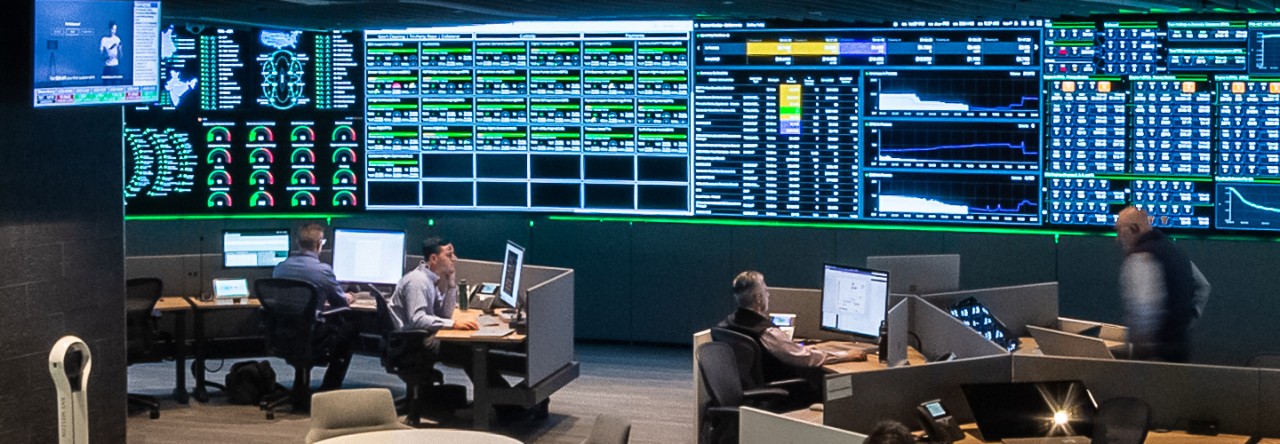Embedded Trade Finance: Optimizing Support in Challenging Times

Embedded Trade Finance: Optimizing Support in Challenging Times
August 2023
This article originally appeared in TRFNews on June 29, 2023 and is reprinted here with permission from the publisher.
Embedded trade finance is becoming an increasingly popular service for banks seeking to reduce costs, enhance efficiencies and implement robust compliance processes. BNY Mellon Treasury Services’ Joon Kim, Global Head of Trade Finance, Working Capital and Portfolio Management, and David Cook, Regional Head & VP, Global Trade Product Management, explore this banking trend further.
Global trade is a market of mammoth proportions, representing the lifeblood of most countries around the world. Approximately $25 trillion worth of goods are traded annually,1 with most transactions requiring the support of banks. The trade finance services that banks provide range from facilitating payments and validating trade documents to mitigating buyer non-payment and seller performance risks as well as the provision of all-important trade financing, critical to bridging the gap between buyers that seek extended payment terms and sellers that require payment upfront.
Despite the high demand for trade services, many banks face extensive challenges in growing – or simply maintaining – their global trade activities. Such challenges include the need to continuously update expensive trade technology to keep up with client demands for efficiency and accuracy. This is exacerbated by the pressure of competing with the larger banks, which enjoy economies of scale, stronger credit and pricing leverage, and larger technology budgets when providing trade credit, financing and processing services to their clients.
A lack of access to a large global correspondent banking network that can easily link the various parties of a particular trade transaction together can be another issue; as is trying to manage increasingly complex, resource-consuming compliance requirements. Added to this is the new conundrum of how to replace a shrinking workforce of qualified experts in trade document examination and the many regulatory requirements they must follow.
For smaller, regional financial institutions (FIs), navigating this landscape and optimizing their global trade capabilities can be particularly challenging. These banks recognize that trade capabilities are a “must have” when meeting the needs of their corporate client base, but then can fall short in the volumes needed to justify extensive investments in trade staff and technology. They are therefore forced to decide between (a) keeping and enhancing their existing staff and legacy systems, (b) purchasing or building a new trade platform or (c) engaging with a global FI experienced in trade to outsource some of their various requirements through embedded trade finance services. Given the scope of today’s challenges, being able to implement and deliver effective processes and client solutions while minimizing their impact on the environment is paramount. And of the three options, it is embedded trade finance that is proving particularly attractive in helping banks to strike this balance.
Customizable Capabilities
Leveraging the trade capabilities of a global institution can bring a host of benefits, helping smaller, local banks to improve their overall trade operations and transition from a manually intensive, high-fixed cost environment to a more flexible, variable cost structure.
Providers typically offer the choice of partial or more comprehensive outsourcing solutions, which can be tailored according to a bank’s specific needs. In some cases, a bank may just be looking for a partner with a larger Relationship Management Application (RMA) network to serve as an intermediary letter of credit (LC) advising/confirming/discounting bank, or to access their network of overseas branches so they can capture additional trade revenue. In other cases, a regional or mid-sized bank may want to specifically leverage a global bank’s technology platform to improve the efficiency of largely manual activities, like collections. Or a bank may be seeking to limit the high initial purchase price and ongoing annual maintenance costs of using a third-party trade platform, while still ensuring that their trade customers have access to a front-end portal to initiate and track their trade transactions.
Practicalities: Diving Deeper Into Embedded Finance
Irrespective of the outsourcing package, implementing such capabilities typically involves three main phases:
Phase 1: Agreement Negotiation
Prior to finalizing a servicing agreement, local banks need to identify their biggest pain points and which elements of their trade finance operations they wish to be outsourced. They should then take time to understand the operational, technological, and reporting requirements that will be needed, along with the potential costs of integration – balanced against the expected savings, both in monetary terms and with respect to administrative burdens.
Phase 2: Implementation
Once an agreement is signed, stakeholders collaborate to ensure roles, responsibilities and process flows are fully defined, such as how to handle trade documents and their related pricing, discrepancy resolution and payment requirements. Both parties also work together to ensure expectations are met regarding the bank’s downstream reporting and private label platform needs, which the bank and its clients will rely on to execute and report on their trade transactions.
Phase 3: Post-implementation
In terms of transaction execution, trade customers will input their trade details into the platform. The local bank will in turn review the transaction via a companion portal, checking it for credit availability where applicable, workability, compliance, etc., and then release it to the outsourcing partner for final processing. Ongoing dialogue is essential to ensure service standards are met.
Important Considerations
Before utilizing an embedded trade finance provider, it is important to consider and understand the role of each party, and what the desired outcome is. For example, outsourcing solutions are primarily designed not to achieve significant improvements in profit margins; nor to be a means to offload compliance/risk responsibilities – rather, their purpose is to help banks enhance their trade processes and compliance controls, while freeing up staff to focus on higher value services.
Furthermore, the collaborative approach of the service is dependent on the marrying of the expertise of both the local and the global banks, with the global bank serving as the back-office trade engine, while the local bank performs the front office role of providing the hands-on, personalized support services trade clients value. For that reason, embedded trade finance may be most suited to banks with an established trade operation in place.
Finally, for banks concerned about negative customer perceptions towards outsourcing, the partner bank can remain completely behind the scenes as a back-office function. By setting up the service to ensure all transactions are processed in the bank’s name, with the white label platform featuring the bank’s own logo, it is the face of their bank alone that end-clients see throughout the process, ensuring a smooth experience. In the case of embedded trade finance, end-clients will have the opportunity to enjoy personalized service from their local bank, while also benefiting from access to the resources of a large global trade partner – a win-win for all parties.
When it comes to selecting an outsourcing partner, choosing a knowledgeable, trusted FI – and one that can provide effective services on a non-compete basis – is key. Equipped with solid compliance controls, a contingency plan in place, and experience dealing with highly detailed integration requirements, such FIs have the tools to support local banks in meeting their increasingly demanding trade processing and compliance requirements, without the need for significant investments in trade infrastructure and overhead costs.
1 Global Trade Surges to $32 Trillion Record in 2022, UN Says, Bloomberg, December 2022
The views expressed herein are those of the author only and may not reflect the views of BNY Mellon. This does not constitute Treasury Services advice, or any other business or legal advice, and it should not be relied upon as such.
BNY Mellon is the corporate brand of The Bank of New York Mellon Corporation and may be used as a generic term to reference the corporation as a whole and/or its various subsidiaries generally. This material and any products and services may be issued or provided under various brand names in various countries by duly authorized and regulated subsidiaries, affiliates, and joint ventures of BNY Mellon, which may include any of the following. The Bank of New York Mellon, at 240 Greenwich Street, New York, NY 10286, USA a banking corporation organized pursuant to the laws of the State of New York, and operating in England through its branch at 160 Queen Victoria Street, London, EC4V 4LA, UK, registered in England and Wales with numbers FC005522 and BR000818. The Bank of New York Mellon is supervised and regulated by the New York State Department of Financial Services and the US Federal Reserve and authorized by the Prudential Regulation Authority. The Bank of New York Mellon, London Branch is subject to regulation by the Financial Conduct Authority and limited regulation by the Prudential Regulation Authority. Details about the extent of our regulation by the Prudential Regulation Authority are available from us on request. The Bank of New York Mellon SA/NV, a Belgian public limited liability company, with company number 0806.743.159, whose registered office is at 46 Rue Montoyerstraat, B-1000 Brussels, Belgium, authorized and regulated as a significant credit institution by the European Central Bank (ECB), under the prudential supervision of the National Bank of Belgium (NBB) and under the supervision of the Belgian Financial Services and Markets Authority (FSMA) for conduct of business rules, and a subsidiary of The Bank of New York Mellon. The Bank of New York Mellon SA/NV operates in England through its branch at 160 Queen Victoria Street, London EC4V 4LA, UK, registered in England and Wales with numbers FC029379 and BR014361. The Bank of New York Mellon SA/NV (London Branch) is authorized by the ECB and subject to limited regulation by the Financial Conduct Authority and the Prudential Regulation Authority. Details about the extent of our regulation by the Financial Conduct Authority and Prudential Regulation Authority are available from us on request. The Bank of New York Mellon SA/NV operating in Ireland through its branch at 4th Floor Hanover Building, Windmill Lane, Dublin 2, Ireland trading as The Bank of New York Mellon SA/NV, Dublin Branch, is authorized by the ECB and is registered with the Companies Registration Office in Ireland No. 907126 & with VAT No. IE 9578054E. The Bank of New York Mellon, Singapore Branch, subject to regulation by the Monetary Authority of Singapore. The Bank of New York Mellon, Hong Kong Branch, subject to regulation by the Hong Kong Monetary Authority and the Securities & Futures Commission of Hong Kong. If this material is distributed in Japan, it is distributed by The Bank of New York Mellon Securities Company Japan Ltd, as intermediary for The Bank of New York Mellon. If this material is distributed in, or from, the Dubai International Financial Centre (“DIFC”), it is communicated by The Bank of New York Mellon, DIFC Branch, regulated by the DFSA and located at DIFC, The Exchange Building 5 North, Level 6, Room 601, P.O. Box 506723, Dubai, UAE, on behalf of The Bank of New York Mellon, which is a wholly-owned subsidiary of The Bank of New York Mellon Corporation. This presentation, which may be considered advertising, is for general information and reference purposes only and is not intended to provide legal, tax, accounting, investment, financial or other professional advice on any matter, and is not to be used as such. BNY Mellon does not warrant or guarantee the accuracy or completeness of, nor undertake to update or amend the information or data contained herein. We expressly disclaim any liability whatsoever for any loss howsoever arising from or in reliance upon any of this information or data. This material is intended for Professional Clients and market counterparties only and no other person should act upon it. The information contained in this presentation is for use by wholesale clients only and is not to be relied upon by retail clients. Not all products and services are offered in all countries.
The Bank of New York Mellon is regulated by the Australian Prudential Regulation Authority and also holds an Australian Financial Services License No. 527917 issued by the Australian Securities and Investments Commission to provide financial services to wholesale clients in Australia.
This material does not constitute an offer to sell or the solicitation of an offer to buy any products or services in the People’s Republic of China (PRC) to any person to whom it is unlawful to make the offer or solicitation in the PRC. BNY Mellon does not represent that this material may be lawfully distributed, or that any products may be lawfully offered, in compliance with any applicable registration or other requirements in the PRC, or pursuant to an exemption available thereunder, or assume any responsibility for facilitating any such distribution or offering. In particular, no action has been taken by the issuer which would permit a public offering of any products or distribution of this material in the PRC. Accordingly, the products are not being offered or sold within the PRC by means of this material or any other document. Neither this material nor any advertisement or other offering material may be distributed or published in the PRC, except under circumstances that will result in compliance with any applicable laws and regulations. Products may be offered or sold to PRC investors outside the territory of the PRC provided that such PRC investors are authorized to buy and sell the products in the offshore market. Potential PRC investors are responsible for obtaining all relevant approvals from the PRC government authorities, including but not limited to the State Administration of Foreign Exchange, and compliance with all applicable laws and regulations, including but not limited to those of the PRC, before purchasing the products.
Trademarks and logos belong to their respective owners.
© 2023 The Bank of New York Mellon Corporation.






